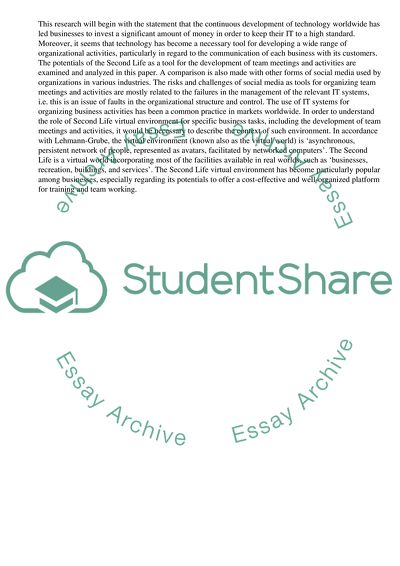Cite this document
(“The Use of the Second Life Virtual Environment and Other Social Media Essay”, n.d.)
Retrieved from https://studentshare.org/management/1435645-organaisational-management
Retrieved from https://studentshare.org/management/1435645-organaisational-management
(The Use of the Second Life Virtual Environment and Other Social Media Essay)
https://studentshare.org/management/1435645-organaisational-management.
https://studentshare.org/management/1435645-organaisational-management.
“The Use of the Second Life Virtual Environment and Other Social Media Essay”, n.d. https://studentshare.org/management/1435645-organaisational-management.


